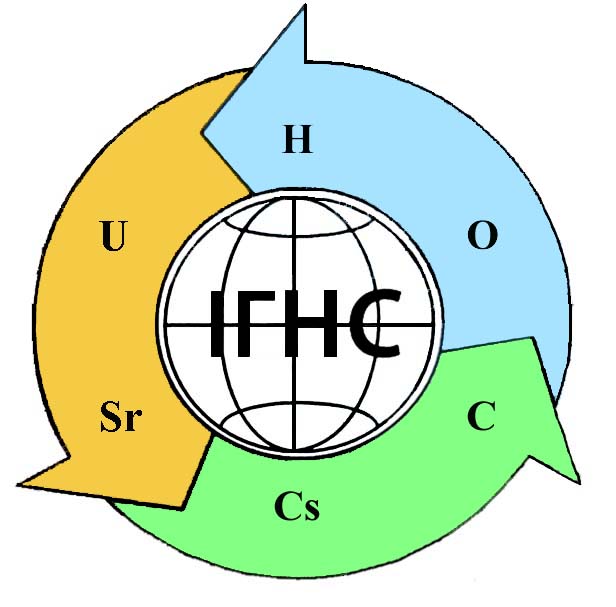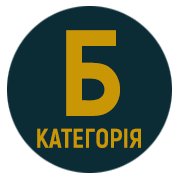GLOBAL NUCLEAR THREATS CAUSED BY RUSSIA’S INVASION OF UKRAINE (AT THE PLACE OF FOREWORD)
DOI:
https://doi.org/10.32782/geotech2022.35.01Keywords:
russia's invasion, nuclear terrorism, nuclear looting,Abstract
The four-month experience of russia’s invasion of Ukraine has already shown the failure of the world security system, primarily the system of nuclear safety and security. And although this is a future subject of research for decades, preliminary conclusions and urgent issues can already be drawn today. Ukraine is a nuclear state having most of constituents of the nuclear fuel cycle. Half of the electricity produced in Ukraine comes from nuclear power plants. During the wartime russian troops permanently bombarded, shelled and occupied nuclear facilities in Ukraine. The largest in Europe Zaporizhzhia NPP and the most worldwide dangerous radioactive contaminated Chornobyl Exclusion Zone were occupied in the very beginning of the russia’s invasion. Russia’s nuclear terrorism led to the radioactive contamination of the atmosphere, fire at the nuclear facilities sites and within radioactive contaminated areas. From all sources of man-made radioactivity, the main amount of artificial radioisotopes (more than 90 %) is concentrated in the spent nuclear fuel (SNF). SNF “wet” and “dry” storage facilities built from concrete are considerably more vulnerable than nuclear reactors designed to withstand high pressure, aircraft, and ballistic missile hits. The amount of radioactivity in SNF facilities in Chornobyl and Energodar corresponds to about 1,000,000 nuclear bombs dropped on Hiroshima. Russia’s terrorists and looters do not need to fire nuclear missiles. A radioactive cloud that could form from the thousands of Chornobyl emissions released from occupied SNF facilities may destroy the Earth’s Biosphere. The international organizations aimed to provide security for nuclear facilities in wartime were impotent to fulfill statutory functions. The modern system of military defense in the World is not able to provide Global Safety and Security. To prevent the global nuclear catastrophe the system of nuclear safety and security requires cardinal overhaul by urgent solution of a number of engineering, technical, environmental and socio-political problems.
References
Charles D. Ferguson & Frank A. Settle (2012). The Future of Nuclear Power in the United States. Federation of American Scientists: https://pubs.fas.org/_docs/Nuclear_Energy_Report-lowres.pdf
The 9/11 Commission Report: Final Report of the National Commission on Terrorist Attacks Upon the United States– July 17, 2004 by National Commission on Terrorist Attacks: https://www.amazon.com.
Benjamin K. Sovacool (2011). Contesting the Future of Nuclear Power: A Critical Global Assessment of Atomic Energy, World Scientific, 296 p.
Congressional Budget Office Vulnerabilities from Attacks on Power Reactors and Spent Material: https://www.cbo.gov/?index=6042&sequence=3&type=0
Ten Years After Chernobyl: What Do We Really Know? Based on the proceedings of the IAEA/WHO/EC International Conference, Vienna, April 1996: International Atomic Energy Agency Division of Public Information P.O.Box 100 Wagramer Strasse 5 A-1400 Vienna, Austria: https://inis.iaea.org/collection/NCLCollectionStore/_Public/28/058/28058918.pdf
ENVIRONMENTAL CONSEQUENCES OF THE CHERNOBYL ACCIDENT AND THEIR REMEDIATION: TWENTY YEARS OF EXPERIENCE Report of the Chernobyl Forum Expert Group ‘Environment’: IAEA, 2006:180 p.
Gayazov A.Z., Komarov S.V., Leshchenko A.Yu., Revenko K.E., Smirnov V.P., Zvir E.A., Ilyin P.A., Teplov V.G. (2019) Study of hydrogen generation and radionuclide release during wet damaged oxide spent fuel storage. Nuclear Energy and Technology 5(1): 61–66. https://doi.org/10.3897/nucet.5.33985;
HYDROGEN EFFECTS ON DISSOLUTION OF SPENT NUCLEAR FUEL IN REDUCING REPOSITORY CONDITIONS–LITERATURE REVIEW AND LABORATORY EXPERIMENTS: Prepared for U.S. Nuclear Regulatory Commission Contract NRC–02–07–006 Prepared by Pavan K. Shukla, Tae Ahn, Jude McMurry, Michael J. Rubal, Darius Daruwalla Yi-Ming Pan: Center for Nuclear Waste Regulatory Analyses San Antonio, Texas; U.S. Nuclear Regulatory Commission Washington, DC; Southwest Research Institute® San Antonio, Texas: May 2015;
EURAD State of the Knowledge (SoK) Report Spent Nuclear Fuel Domain 3.1.1 Kastriot Spahiu SKB, Stockholm and Chalmers University of Technology, Gothenburg, Sweden Version : 1.0 ; 09 November 2021.
Kholosha V.I., Proskura M.I., Ivanov Yu.O. etc. Radiation and ecological importance of natural and man-made objects of the Exclusion Zone: Bull. Ecological status of the Exclusion Zone and the Unconditional Resettlement Zone: 1999, No 13:3–8.;
Dolin V.V., Bondarenko G.M., Orlov O.O. Environmental self-clearing after Chornobyl Catastrophe: Kyiv, 2004:220 p. ;
Spent Nuclear Fuel of NPP: Inform. Bull. of State Scientific Institution “The Joint Institute for Power and Nuclear Research – Sosny” of NAS of Belаrus: 2010, No 7-8 (13-14): 1-8.
Fire Information for Resource Management System: https://firms.modaps.eosdis.nasa.gov/.
Stone R. Dirty bomb ingredients go missing from Chornobyl monitoring lab: https://www.science.org/content/article/dirty-bombingredients-go-missing-chornobyl-monitoring-lab
IAEA Director General Calls for Restraint, Reiterates Need to Ensure Safety of Ukraine’s Nuclear Facilities and Their Staff: Joanne Liou, IAEA Office of Public Information and Communication: https://www.iaea.org/newscenter/news/iaea-director-general-calls-for-restraint-reiteratesneed-to-ensure-safety-of-ukraines-nuclear-facilities-and-their-staff
Russian Army Turns Ukraine’s Largest Nuclear Plant Into a Military Base // https://www.wsj.com/articles/russian-army-turnsukraines-largest-nuclear-plant-into-a-military-base-11657035694









